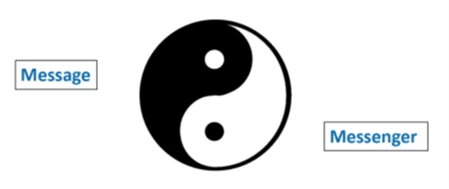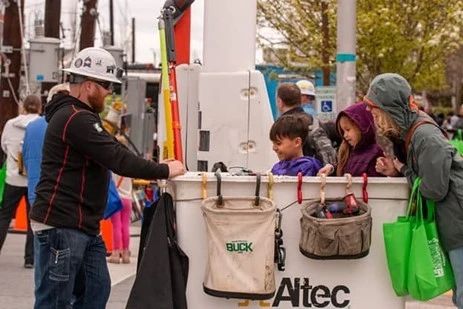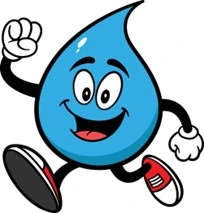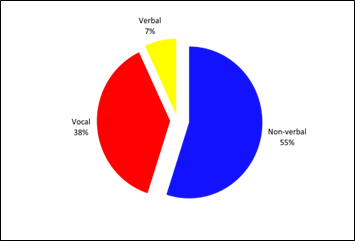
“Believe only half of what you see and nothing that you hear.” That was a sentiment first expressed by Edgar Allen Poe in the 19th century, then made popular in the 20th century by the journalist H.L. Mencken.
But today, the issue has new urgency: in an era of deepfake images and large-language-model artificial intelligence systems like ChatGPT and Bard, how can anyone know what to believe?
That’s a perennial topic for investigation on college campuses, but today we’ll steer away from epistemology and focus instead on utility marketing and communications.
Utility Community Relations: New Technologies, Same Challenges
New technologies typically are two-edged swords that have a large impact — positive and negative — on people, societies, and workplaces. We are still a long way from even being able to assess the costs and benefits of AI systems like ChatGPT.
For utility marketers and communicators, new technologies have been changing the way work is done for decades. Typewriters gave way to PCs, smartphones, and tablets. Faxes were supplanted by email and social media. Landline phones were eclipsed by mobile devices. During COVID-19, in-person, face-to-face meetings were replaced by video meetings.
Despite all the technological changes, effective utility marketing and communications still comes down to artfully blending “message” and “messenger.” Do you have a message that resonates with your target audience? And, are you delivering it through the most impactful channels?
A great message delivered through the wrong channel will flop. And great channels can be used to convey awful messages. You need both message and messenger, and they need to be carefully selected and integrated. They are like the yin-yang symbol which blends opposite but interconnected forces (below).

A diverse customer base, and a fragmented media landscape, mean utilities need to use a portfolio approach in their marketing. There is no single silver bullet, no “one size fits all” solution. I emphasize the importance of community relations here because in my experience, that activity too often is given short shrift by utility decisionmakers. Marketing should include, but not be limited to, community relations.
Communications Tip of the Month: As utilities seek more compelling customer communications, don’t bet the farm on the newest app. Instead, adopt a portfolio of tactics and channels that include, but are not limited to, direct, in-person community relations outreach. And, if you need some extra arms and legs, don’t be afraid to mobilize your retirees to supplement employee volunteers.
Utility Community Relations: Chase Big Results by Going Small
Now, as spring is upon us and COVID-19, for the most part, is behind us, utility marketers and communicators have a powerful opportunity to create, repair, or strengthen ties to customers and the community by engaging in more in-person outreach.
Your customers are social beings that crave interpersonal communication and connection. Many have been working remotely (or have lost their jobs). They have heightened anxiety about all things economic, but particularly utility bills, which have been on a roller coaster for a year.
Spring, Summer, and Fall are the seasons of Farmer’s Markets and community events, movies and concerts in the park, Founder’s Day events and county fairs, art walks, harvest celebrations, youth sports, and the celebration of national holidays with parades, food trucks, children’s face painting, and petting zoos.
Your utility needs to be a fixture at those events! If you’re staffing a booth, make sure you bring a large water tank, several water bowls, and a bag of dog treats. People bring dogs to these events, and a booth with water and treats for four-legged friends is more likely to draw passers-by than one that does not.
Above all, Make. It. Fun. Bring the hot-dog zapper that shows what a jolt of electricity can do to a small piece of processed food. Find ways to gamify electricity. Make TikTok dance videos. Give away prizes. Hold a podcast from the event.
Consider the example of Snohomish Public Utility District (WA), which recently held its first-ever Energy Block party. In addition to food trucks and electric safety demonstrations, roughly two dozen electric vehicles were on display. Three bucket trucks were on hand, and children were eager to climb into the backets (see below). The block party was attended by between 4,000 and 6,000 people.

“The event offered something for everyone,” said Kellie Stickney, public relations and media liaison for the PUD, according to an article from the American Public Power Association’s Public Power Current newsletter. “This allowed us to meet people where they were at while also informing them about PUD programs and projects that they may have not even realized they would have interest.” EEC blogged on this very topic.
 Whether it’s a Wanda the Water Drop mascot or Electric Eddie, understand this: If you find ways to engage the children, the parents will more than likely stay, at least for a few moments. Have your community relations staff work with the event committee to come up with fresh ideas for marketing at the event.
Whether it’s a Wanda the Water Drop mascot or Electric Eddie, understand this: If you find ways to engage the children, the parents will more than likely stay, at least for a few moments. Have your community relations staff work with the event committee to come up with fresh ideas for marketing at the event.
Think like a marketer! Each of those community events, and others like them, are opportunities to meet the people who pay your salaries. Their concerns should be your concerns too. For the next six months, I would imagine there’s at least one event per week where your utility could plant its flag and show its face.
Face to Face (F2F) is Still a Powerful Tool in Your Utility Community Relations Efforts
Albert Mehrabian, a UCLA psychology professor, long ago conducted experiments that showed most of the meaning in personal interactions was conveyed through non-verbal and vocal means. Only about 7% of the meaning conveyed in a personal interaction came from words.

You could tell someone who just suffered a loss, “I’m very sorry for your loss,” but if you said that while checking your watch, or looking over the person’s shoulder, or using a flat, wooden monotone, your deeds drowned out your words.
But if you locked eyes with someone, listened carefully, held off a response until they were finished, nodded your head to show you understand, then spoke in a soft, empathic voice, your non-verbal, vocal, and verbal signals aligned. You will have made a connection!
And, for so many of your customers, connection is particularly important today, after several years of tumult and distance that included social distancing because of COVID. They are eager for interpersonal interaction.
Now, do customers wake up and say to themselves, “OK, today is the day when I reach out and connect with my utility?” No, of course not. But no one ever thought they needed a smart phone until Steve Jobs uncovered that unmet need. Your utility must be unrelenting in its search to connect with customers at a time, place, and mode of their choosing.
F2F Marketing: What’s the Message?
OK, so the preceding should cover the “messenger” part of the utility marketing and communications process. What about the “Message” part? What will you say when you come face to face with someone who’s pays part of your salary?
There’s no shortage of messages, or things to be promoted:
- Market your fixed-billing program
- Recruit members for a utility advisory council or online research panel
- Gather customers’ mobile numbers so they can receive texts
- Advertise your time of use program
- Promote your no-cost, walk-through energy or water audit program
- Inform income-qualified customers about programs to help lower their bill
- Seek applications for new employees or interns
- Give away LED bulbs
- Provide information on what your utility is doing to take better care of the environment
- Publicize your utility’s podcast on electric, gas, water, or environmental issues
- Distribute refrigerator magnets with summer energy tips
- Discuss your green energy/renewable natural gas program
- If you are a community-owned utility, inform customers that they are owners, and what that means
- Use table cards to ask customers about the improvements they’d like to see from your utility
- Announce an upcoming community meeting on a topic of keen local interest
There’s no shortage of resources you can investigate to learn more about the power of direct, in-person communications: Malcolm Gladwell addresses it in the afterward to his The Tipping Point. Harvard Business Review has published several articles on effective face-to-face communications. Curious readers also may want to consult How to Balance What Technology Has to Offer Without Forgetting the Benefits of Face-to-Face Communication, from Entrepreneur magazine, and People Shift: How the Pandemic Changed Utility Customer Service Practices, Public Power magazine.
OK, ready, set, GO and connect with your community of customers!
Photo Credits: iStock unless otherwise noted
________________________________________________________________________
EEC Resources
Rate-case Communications: Why This Time it’s Different
Utilities, Do More Face-to-Face Public Engagement!
Face-to-Face Communications Is a Powerful, Post-digital Communications Tool
Retirees: A Utility’s Secret Weapon in the Net Metering Battle
Your Utility’s New Feet on the Street
Overcoming Email Immunity with Face-to-Face Communications


